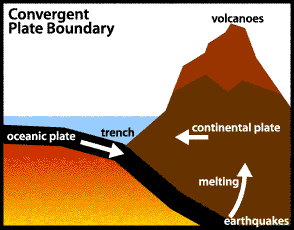Even though I am really tired flying over the Himalayas made me super excited about what i was going to learn about them and the plate boundary. Here is a photo from the airplane that i took:
Photo from: http://blog.expatfinder.com/category/checklist/
Did you know that the although the Himalayas is the highest mountain range in the world it is also the newest? I learned that from one of the plaques at the visitor center.
I also discovered that the Himalayas are an example of a Collision boundary. A collision boundary is when there is a collision between two continents. The collision causes the crust at the boundary to be pushed up forming a mountain range. Mountain ranges are formed because neither of the two continents are dense enough to subduct. In this case the Indian subcontinent is now welded to the Eurasian continent because India is pushing northward into China at a rate of about 5 centimeters per year.
Here is a picture to clarify:
As a result of the two plates colliding there are many earthquakes that occur. There were major earthquakes in 1950 and 1897. The most recent major earthquake was on September 18, 2011. Over 100,000 homes in India, Nepal and Tibet were hit.
Well, on that not so uplifting note I have to sign off and run to the airport! Hope you enjoyed this blog! I will be back in Seattle to share this information with my club in a day or two!!
Longitude & Latitude: 30° 37' N / 79° 48' E





